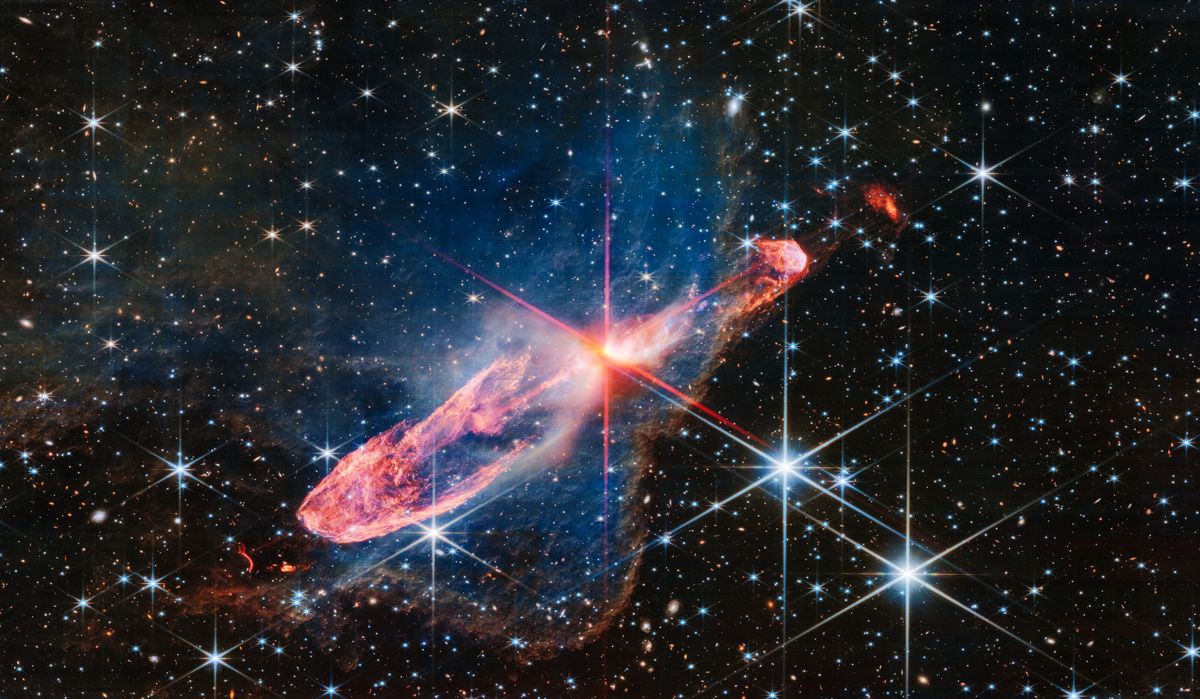New NIRCam image from JWST (Herbig-Haro 46/47)

👋 Hey Friends,
today we shortly dive in into the infrared world of the James Webb Space Telescope with its shortly released image showing the stellar conjunction of two closely approaching stars.

Using the James Webb Space Telescope, Scientists captured a high-resolution image of a tightly bound pair of actively forming stars categorized under Herbig-Haro 46/47. The image shows a near-infrared view of this glamorous astronomical happening. Spotting the actual stars in the image can be quite a challenge but the close proximity of the stars makes itself visible through the red diffraction spikes at the rather centre of the image. Adding to their star's mass is the disc of gas and dust visible in the surroundings of the central area. This galaxy-looking shape comes from the high amounts of energy and mass which is released by both the stars in the middle.
Herbig-Haro 46/47 is a highly significant celestial object warranting in-depth examination due to its relatively youthful age, estimated to be just a few thousand years. Considering that stars typically require millions of years to form, investigating such early stages offers valuable insights into the gradual accumulation of mass in stars over time. This knowledge is pivotal in developing models that shed light on the formation of low-mass stars, including our own Sun.
The distinctive two-sided orange lobes observed in Herbig-Haro 46/47 stem from prior ejection events initiated by the stars. Additionally, recent ejections are identifiable as blue, thread-like features along the angled diffraction spike, overlaying the orange lobes.
The phenomenon of actively forming stars accreting gas and dust from their immediate surroundings, shaping a disc-like structure around them, is well-known. When these stars undergo excessive material ingestion in a short period, they respond by emitting dual-sided jets in opposite directions. This process aids in stabilizing the star's spin while concurrently reducing mass from the surrounding area. Over extended periods spanning millennia, these ejections play a crucial role in regulating the retained mass of the stars.
If you have enjoyed this episode of THE SUNDAY NIGHT SKY and you don't want to miss out on any future episodes consider subscribing for FREE.
Thanks again and I'll see you soon.
xoxo
Victor 👋 :) (@observethecosmos)
✍️ Quote of the week
“I like the night. Without the dark, we'd never see the stars.”
Stephenie Meyer
🎟 Want to advertise on The Sunday Night Sky? → Send an E-Mail
Check out some of my social media pages to learn more about math, science and astronomy:
🎬:Youtube